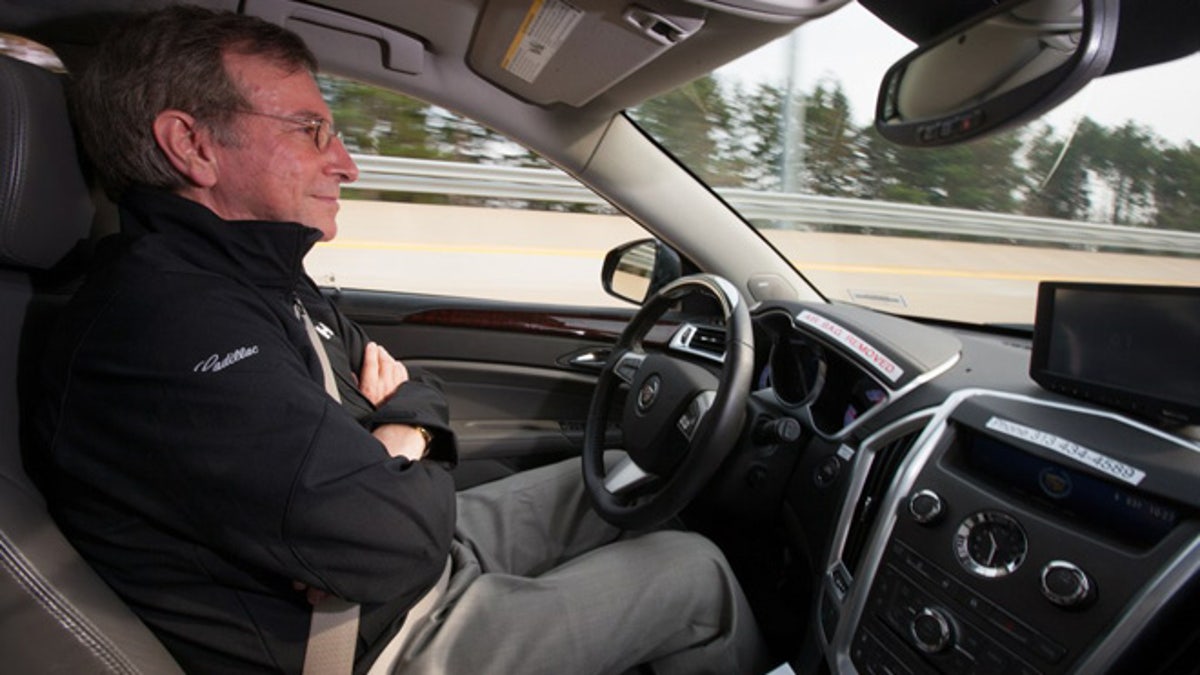
Are American automakers getting closer to building a robotic car?
Ford and GM recently announced plans for semi-autonomous tech that look promising. Both companies are working toward a similar goal. The idea being to let the car do more of the driving for you, but not necessarily take over completely.
For example, as you are driving down the road, you’d click a button that lets you take your hands off the wheel and your foot off the accelerator to let the car do the work. The vehicle uses sensors to monitor lane markings and adjust vehicle speed automatically to match the flow of traffic.
Features like this will make your commute easier and also help reduce fatalities on American roadways. A computer in your car can analyze surroundings and react much faster than any human.
Ford’s latest technology is called Traffic Jam Assist and the company says it could be on the road sometime between 2017-2025, while Cadillac’s is known as Super Cruise and may debut by mid-decade, according to company insiders.
The burning question is: which US automaker will lead the pack? Who will build the first robotic car? Considering that European and Japanese automakers like Volvo and Infiniti already offer some semi-autonomous features for pedestrian detection and automatic braking, the U.S. needs a big win.
Dave Sullivan, an analyst with AutoPacific, thinks one car company seems to have an edge.
“Right now it looks like Ford might be ahead by a nose,” he says. “GM might have suffered some setbacks while their engineering departments went through the meat grinder in Chapter 11.”
Both GM and Ford already offer adaptive cruise control, which senses the car in front of you and automatically adjusts your speed, and lane departure warning systems, but the new tech goes a step further.
Traffic Jam Assist taps several existing camera and radar based systems, including ones that can autonomously park a car, and brings them together through an advanced computer algorithm that will be able to autonomously steer and brake a car through stop and go highway traffic.
GM R&D program manager Dr. Jeremy Salinger told FoxNews.com says Super Cruise will use what he calls “sensor fusion” -- a technique where the semi-autonomous system reads data from multiple inputs simultaneously. The system will rely, in part, on the sensors around the vehicle to read lane markings and detect traffic, but will also use GPS mapping data. For example, it might know that there is a curve coming up ahead and how bad the congestion is and use that information to slow the car as needed, in real-time.
Both Super Cruise and Traffic Jam Assist will also know if the driver is paying attention and ready to take control if something goes wrong. Mercedes-Benz and Lexus are already using similar technologies that can tell if a driver is getting drowsy or doesn’t have their eyes on the road.
Still, Gartner automotive analyst Thilo Koslowski doesn’t think any one U.S. automaker is ahead in this race. He says the reason American automakers are actually neck-and-neck is that companies like Google and industry supplier Continental Automotive Systems are working on software and hardware required for semi-autonomous driving that is well-advanced and potentially available to any company that wants it.
Google, for instance, says it has now driven over 250,000 miles with its fleet of fully-autonomous cars, mostly around San Francisco but on both highways and local streets. Meanwhile, Sullivan says companies like Continental are selling their increasingly affordable components to several automakers that are all working on similar time-frames.
There are many other complex issues before people will regularly be leaving the driving to their cars. Salinger says everything from the consumer response to true "auto" mobiles, as well as local and state regulations and the political climate will be factors moving forward.
Dan Flores, a GM technology spokesperson, sums up the road ahead for robotic cars saying “you might get ticked off when your computer crashes and you lose your work,” he says. “But this technology for semi-autonomous cars has to work right every time.”